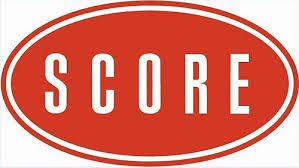
You may be wondering how your SAT score is determined. Where does that score of 200-800 on each section of the SAT come from? What does your SAT score mean? Or, maybe you're familiar with the concept of raw scores, but you don't know how your raw score is converted into a scaled score. Hopefully, this article will answer your questions and clear up any confusion.
In this post, I'll clarify the difference between raw scores and scaled scores and provide charts that show the SAT raw score conversion to scaled score. Furthermore, I'll explain why the data from these SAT score charts can be helpful to you in your SAT preparation.
Scoring on The Digital SAT
There have been a few major changes to the new digital SAT, and scoring is one of them. The digital SAT is still scored on a 1600-point scale, with 800 points possible on SAT Math and 800 on SAT Reading. The scoring changes apply to raw scores and how those scores convert to scaled scores.

What Is a Raw Score?
Before the release of the digital SAT, your raw score for each section was calculated from the number of questions you answered correctly. For every question answered correctly on the SAT, students received one point. For every question either skipped or answered incorrectly on the SAT, students received zero points.
This has changed a little now that the SAT is completely digital. The digital SAT uses what’s called adaptive testing—the test actually adapts to each individual student’s performance. This is possible through the use of modules. Both SAT Math and SAT Reading and Writing are divided into two modules each.
The first module in both sections contains a mix of easy, medium, and hard questions. Once students complete the first module in each section, the test automatically adapts the second module to meet the students’ needs, whether that be for easier questions (if they didn’t do very well in the first module) or more difficult questions (if they totally aced it).
But let’s get back to how this fancy new testing feature impacts scoring. On the old SAT, every single question answered correctly was worth a single point, regardless of the difficulty level. On the digital SAT, difficult questions hold more weight. We don’t yet know how much or little each question will be worth or how the scoring will break down, but we do know that it will be different from previous years.
There will still be raw and scaled scores—we just don’t know for certain how they’ll be calculated. What we do know is that raw scores will still vary for each of the two test sections, since there are a different number of questions in each section. Reading and Writing has 54 questions (which used to indicate a maximum raw score of 54), and Math has 44 questions (which indicated a maximum raw score of 44).
Once we get more information from the College Board about how raw scores will be calculated, we’ll be better equipped to convert them into scaled scores.
What Is a Scaled Score?
The scaled score is the score from 200-800 you receive on each section of the SAT. Your scaled score is determined from the raw score through a process that the College Board calls equating. Equating “ensures that the different forms of the test or the level of ability of the students with whom you are tested do not affect your score. Equating makes it possible to make comparisons among test takers who take different editions of the test across different administrations.”
Therefore, your scaled score is not dependent on which date or place you take the SAT, nor is it dependent on the skill level of the students who take your edition of the test. The College Board doesn’t release its formula for equating, but it does periodically release scoring charts to convert raw scores to scaled scores. The scoring charts change slightly for each edition of the test, but they remain somewhat consistent.

Why Is This Data Important? How Can It Help You?
From your target scaled score, you can get a rough idea of how many questions you need to answer correctly on each section to reach your goal. While there isn’t yet a conversion chart available for the digital SAT, it’s still helpful to reference older charts. The College Board has said that scores on the older, paper-based test and the new digital SAT should be comparable, so we shouldn’t see a huge difference on an updated chart once it’s released.
For example, if you wanted to get a 750 on the previous, paper version of the Reading and Writing section, you needed to get a raw score of about 62. Therefore, you could only get about 4 questions wrong or omit 5 questions to reach your target score. Having this knowledge can inform your guessing and study strategies.
Raw Score to Scaled Score Conversion Charts
Below is a sample SAT conversion chart released by the College Board. Remember that SAT score charts change for each edition of the test, but the changes are usually not that drastic. For example, a raw score of 46 in Math converted to a scaled score of 660 on the January 2010 and 2011 editions of the SAT. However, in May 2011 and 2009, a 46 in Math converted to a 680.

Critical Reading
| Raw Score | Scaled Score | 2014 Percentile |
| 67 | 800 | 99 |
| 66 | 800 | 99 |
| 65 | 800 | 99 |
| 64 | 790 | 99 |
| 63 | 770 | 99 |
| 62 | 760 | 99 |
| 61 | 740 | 98 |
| 60 | 730 | 97 |
| 59 | 720 | 96 |
| 58 | 700 | 96 |
| 57 | 690 | 95 |
| 56 | 680 | 94 |
| 55 | 670 | 92 |
| 54 | 670 | 92 |
| 53 | 660 | 91 |
| 52 | 650 | 90 |
| 51 | 640 | 89 |
| 50 | 630 | 86 |
| 49 | 620 | 84 |
| 48 | 620 | 84 |
| 47 | 610 | 82 |
| 46 | 600 | 80 |
| 45 | 600 | 80 |
| 44 | 590 | 78 |
| 43 | 580 | 75 |
| 42 | 570 | 73 |
| 41 | 570 | 73 |
| 40 | 560 | 70 |
| 39 | 550 | 67 |
| 38 | 550 | 67 |
| 37 | 540 | 64 |
| 36 | 530 | 61 |
| 35 | 530 | 61 |
| 34 | 520 | 57 |
| 33 | 520 | 57 |
| 32 | 510 | 54 |
| 31 | 500 | 51 |
| 30 | 500 | 51 |
| 29 | 490 | 48 |
| 28 | 480 | 44 |
| 27 | 480 | 44 |
| 26 | 470 | 41 |
| 25 | 460 | 37 |
| 24 | 460 | 37 |
| 23 | 450 | 35 |
| 22 | 440 | 31 |
| 21 | 440 | 31 |
| 20 | 430 | 28 |
| 19 | 420 | 25 |
| 18 | 410 | 22 |
| 17 | 410 | 22 |
| 16 | 400 | 19 |
| 15 | 390 | 17 |
| 14 | 380 | 15 |
| 13 | 380 | 15 |
| 12 | 370 | 13 |
| 11 | 360 | 11 |
| 10 | 350 | 9 |
| 9 | 340 | 8 |
| 8 | 330 | 7 |
| 7 | 320 | 5 |
| 6 | 310 | 5 |
| 5 | 300 | 4 |
| 4 | 290 | 3 |
| 3 | 270 | 2 |
| 2 | 260 | 2 |
| 1 | 240 | 1 |
| 0 | 220 | 1 |
| -1 | 210 | 1 |
| -2 or below | 200 | -- |

Charts are fun.
Math
| Raw Score | Scaled Score | 2014 Percentile |
| 54 | 800 | 99 |
| 53 | 790 | 99 |
| 52 | 760 | 97 |
| 51 | 740 | 96 |
| 50 | 720 | 95 |
| 49 | 710 | 94 |
| 48 | 700 | 93 |
| 47 | 690 | 92 |
| 46 | 680 | 90 |
| 45 | 670 | 89 |
| 44 | 660 | 87 |
| 43 | 650 | 86 |
| 42 | 640 | 84 |
| 41 | 640 | 84 |
| 40 | 630 | 82 |
| 39 | 620 | 80 |
| 38 | 610 | 77 |
| 37 | 600 | 75 |
| 36 | 590 | 73 |
| 35 | 590 | 73 |
| 34 | 580 | 71 |
| 33 | 570 | 68 |
| 32 | 560 | 66 |
| 31 | 550 | 62 |
| 30 | 540 | 59 |
| 29 | 540 | 59 |
| 28 | 530 | 56 |
| 27 | 520 | 53 |
| 26 | 510 | 50 |
| 25 | 500 | 46 |
| 24 | 490 | 44 |
| 23 | 480 | 41 |
| 22 | 480 | 41 |
| 21 | 470 | 37 |
| 20 | 460 | 34 |
| 19 | 450 | 31 |
| 18 | 440 | 28 |
| 17 | 430 | 25 |
| 16 | 420 | 22 |
| 15 | 420 | 22 |
| 14 | 410 | 19 |
| 13 | 400 | 17 |
| 12 | 390 | 15 |
| 11 | 380 | 13 |
| 10 | 370 | 11 |
| 9 | 360 | 9 |
| 8 | 350 | 8 |
| 7 | 330 | 6 |
| 6 | 320 | 5 |
| 5 | 310 | 4 |
| 4 | 290 | 2 |
| 3 | 280 | 2 |
| 2 | 260 | 1 |
| 1 | 240 | 1 |
| 0 | 220 | 1- |
| -1 | 200 | -- |
| -2 and below | 200 | -- |
What's Next?
The best way to know your potential SAT score is to complete practice exams through BlueBook. We'll teach you everything you need to know about using BlueBook so you can get the most out of your practice time.
Now that you've seen the SAT score chart, find out what's considered a good and bad SAT score.












